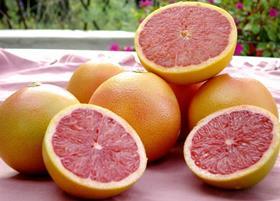
Entering the 2015 South African citrus season back in April, CEO of industry body Citrus Growers Association (CGA) Justin Chadwick warned that the season “had difficult written all over it”, citing “uncertain market conditions”.
But with the season now drawing towards completion, the industry is coasting through a campaign that has exceeded expectations.
“We’ve shipped almost 100m cartons of what is expected to be a 115m-carton crop,” said Chadwick. “We’re now packing like crazy and the markets are surprisingly good.
Lemons were a standout performer for South Africa last year, and the trend has continued this season, he noted.
“Lemons were a success story again, driven by lower supply out of the Southern Hemisphere and increased demand worldwide,” said Chadwick. “Every market is increasing its demand for lemons, not just Asia. In Asia, we see demand being driven by health associations. People are having lemons in drinks and using them to decrease their salt intake.”
South Africa’s own lemon production has more than doubled over the past 10 years, climbing from 6m cartons to 14m cartons, noted Chadwick.
Despite rising global demand for lemons, Chadwick cautions that the strong market also reflects a downturn in world supply caused by climatic setbacks for production giant Argentina.
“Argentina used to export 360,000 tonnes but the volume has gone down to 50 per cent of that due to the drought and freeze they suffered. The latest forecasts are for an export crop of 220,000 tonnes, but that’s still nowhere near its former highs,” he noted. “The question is: what happens when Argentina gets back up to 360,000 tonnes?Will global demand have risen to cover those volumes?”
Korea leads grapefruit growth
Grapefruit, which has often been tricky for the industry in recent years, has also exceeded expectations.
“Grapefruit has always been a problem child but it’s come alive this year – we’ve had good demand and good returns,” said Chadwick.
Japan, which remains the leading destination, has been “solid”, absorbing around 3m cartons, which is recognised as this market’s volume limit nowadays. The UK, another key market, has been very stable, he added, taking around 900,000 cartons. But the growth for grapefruit has come in the East, Chadwick noted, specifically in South Korea.
“We only achieved access to South Korea in 2013/14 and we’ve seen remarkable demand,” said Chadwick. “After shipping just over 80,000 cartons in 2013, volumes grew to more than 440,000 cartons in 2014 and this year they’ve gone up to more than 700,000 cartons.”
The Florida Department of Agriculture recently linked up with the Outback Steakhouse chain to promote Florida grapefruit in South Korea. Chadwick believes that South Africa – as a counterseasonal supplier – may be reaping the benefits of some of this promotional work.
However, he also pointed to South African industry initiatives to deliver grapefruit at the optimum stage of development, as key to boosting sales.
“At the start of the year, growers realised they were going to have some sizing problems this season due to lack of rainfall,” said Chadwick. “They discussed how to deal with the anticipated smaller fruit and slowed down packing to deliver the fruit over a longer period.
“Traditionally, there has been a push to pack all grapefruit before the Valencia season starts. But really there is no need to do that because South Africa is the only one exporting grapefruit out of the Southern Hemisphere. By staggering the packouts, they were able to drop the peak and deliver better results.”
Despite the positive citrus season for South Africa, it has not all been plain sailing. In particular, the Russian market has been tough, with the depreciation of the rouble impacting sales, noted Chadwick.
Nevertheless, the European market has held up well. “There has been no move away from Europe despite fears over Citrus Black Spot– volumes to Europe are actually up on last year – at similar levels to 2013,” said Chadwick. “Our sales to Europe have pretty much flat-lined over the past five years, falling within a range of 600,000-650,000 tonnes between 1999 and 2014.”



